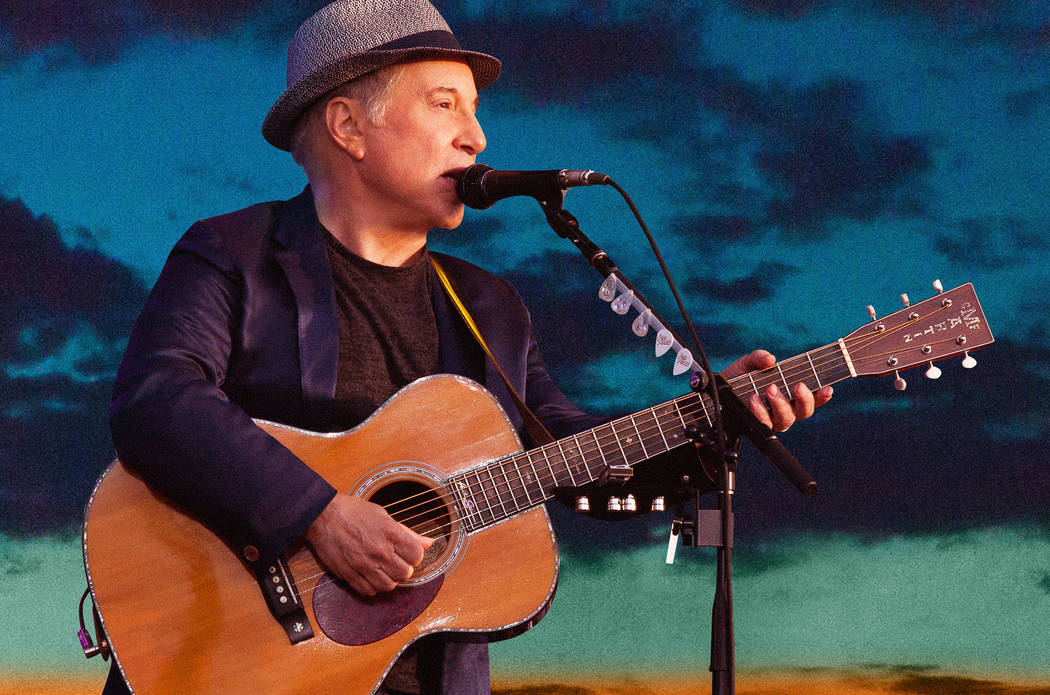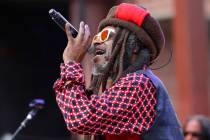3 reasons to see Paul Simon in Las Vegas
“Every day’s an endless dream of cigarettes and magazines
And each town looks the same to me, the movies and the factories
And every stranger’s face I see reminds me that I long to be …”
Home.
That’s where Paul Simon is headed.
Currently ensconced on his farewell tour, the 76-year-old is retiring from the road.
On Sunday, he’ll play what is likely to be his last Vegas show.
Here’s why we’ll miss him the most:
He’s among music’s most accomplished wordsmiths
Writing about Paul Simon can make you quit writing.
He’s that great.
Confessional without being prosaic, literary without being self-indulgent, earnest without being maudlin, he’s captured the full spectrum of the human experience with seemingly bottomless wit and sincerity.
Whether it’s articulating the enervated emotions of a lonely outsider (“I Am Rock”), cataloging a mother’s affection (“Loves Me Like A Rock”) or wrangling with the beauty and harshness of modernity (“The Boy in the Bubble”), Simon’s words strike a rare balance between the poetic, the playful and the poignant.
As such, Simon was given the Library of Congress’s inaugural Gershwin Prize for Popular Song in 2007, a fitting honor for the 5-foot-3 tower of song.
He’s an underrated guitar great
If Simon’s words are capable of eliciting sighs from a tire iron, depending on the tune, the same could be said of his fingers.
A disciple of Scottish folk great Bert Jansch, Simon is an ace finger-picker. But his highly refined chops manifest themselves subtly.
What really distinguishes Simon’s playing is its expressiveness. Like his voice — a thing of warm, wry grace — Simon’s guitar playing makes you feel what he’s saying.
This is one of those intangibles that can’t be manufactured. It’s like a knockout artist’s punching power: You can work on the delivery, hone it to a degree, but you either have it or you don’t.
And when you combine Simon’s prodigious fretwork with his ability to move you with it, it’s a synthesis of skill and sentiment that few possess.
He expanded pop music’s palate
In February 1985, Paul Simon flew to Johannesburg, South Africa, and ended up taking the world with him.
The album that resulted from his trip, 1986’s “Graceland,” ranks among that decade’s greatest.
Introducing native musical traditions such as isicathamiya and mbaqanga to the top of the pop charts, Simon and collaborators such as male choral troupe Ladysmith Black Mambazo and Senegalese singer Youssou N’Dour crafted an album that made an indelible mark in the modern songbook.
Bold and beautiful, adventurous and affecting, “Graceland” remains a record of the ages.
While not quite as heralded — few albums could have been, really — Simon’s 1990 follow-up, “The Rhythm of the Saints,” also boasted a global bent, with Simon this time delving into heavily percussive Latin American music traditions such as batucada.
The sound was different, the results the same: A record that still sounds fresh decades after the fact.
Contact Jason Bracelin at jbracelin@reviewjournal.com or 702-383-0476. Follow @JasonBracelin on Twitter.






























